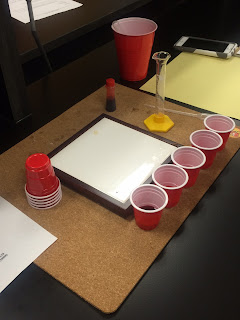There are four levels of organization to describe the location of an electron in any atom:
1. Principal energy level: How far away from the nucleus an electron is (n).
2. Sublevel: There are four different sublevels called s, p, d, and f. They are shown here:
3. Orbitals: The s sublevel has one spherical orbital. The p sublevel has three dumb-bell shaped orbitals. The d and f sublevels have five and seven orbitals, respectively, and are complexly shaped.
4. Spin: Each orbital can hold two electrons of opposite spin, one upward and the other downward.
There are rules for placing electrons:
1. Aufbau Principle: Electrons enter the lower energy orbitals first.
2. Pauli Exclusion Principle: An orbital can only have two opposite spinning electrons.
3. Hund's Rule: In a sublevel, electrons must enter singly and then pair up.
Here is a website that explains these rules more in-depth:
Electron Placing Rules























